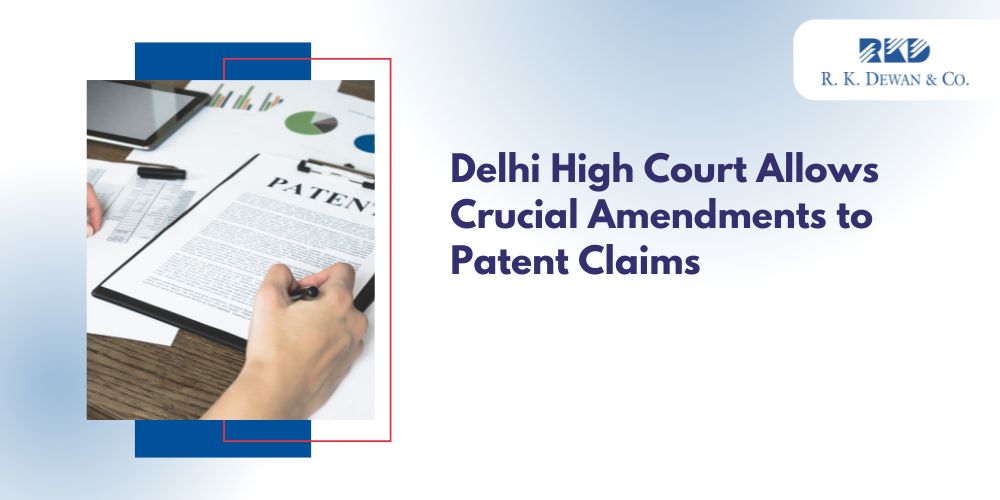A recent decision by the Hon’ble Delhi High Court in Cellectis v. Assistant Controller of Patents showcases the delicate balance between judicial scrutiny and patent law, especially in the complex realm of gene-based immunotherapies. The Court’s allowance of amendments to patent claims reflects its willingness to accommodate genuine efforts at clarifying inventive scope— particularly when procedural objections risk overshadowing scientific advancement.
At the heart of the matter lies Cellectis’s patent application titled “Method for Engineering Allogenic and Highly Active T-Cells for Immunotherapy.” The invention proposes an ex vivo method for modifying human T-cells using gene editing tools to inactivate both T-cell receptor (TCR) components and immune checkpoint proteins, followed by the introduction of chimeric antigen receptors (CARs) to create universal, highly active, non-alloreactive donorderived T-cells. These modified T-cells promise scalable, off-theshelf solutions for immunotherapy against cancer and other diseases.
However, the application faced multiple technical objections from the Indian Patent Office in its First Examination Report (FER) and was later refused under Section 15 of the Patents Act.
Technical Objections Raised in the FER and Refusal Order
1. Lack of Novelty and Inventive Step [Sections 2(1)(j) & 2(1)(ja)]
Claims 1, 18, 27, and 28 were found lacking in novelty in light of prior art documents (e.g., D1 and D2), which disclosed T-cells engineered for immunotherapeutic purposes, including knockout of TCR genes and introduction of CARs. Additional references (D4 and D5) were cited at the hearing stage to argue that combining immune checkpoint inhibition with CAR T-cell engineering would be obvious to a skilled person, thus failing the test of inventive step.
2. Section 3(i): Method of Treatment
The most serious roadblock came under Section 3(i)—which excludes from patentability any process for the treatment of human beings. The Patent Office observed that although the claims were worded as ex vivo cell preparation methods, the specification and figures (especially Figure 5) extensively discussed the use of the modified cells in treatment, diagnosis, and prognosis, including modes of administration like intravenous injection. The Controller concluded that this transformed the claimed method into a de facto therapeutic process, falling squarely within the ambit of Section 3(i).
- Incomplete and Ambiguous Amendments
While the applicant attempted to amend the claims to address these concerns—by focusing on ex vivo cell processing and removing certain references—the deletion of a critical step (claim 1(a): sourcing T-cells from blood/culture) was held to undermine the technical coherence of the remaining steps. Moreover, dependent claims still referenced this deleted step, creating inconsistencies.
Judicial Perspective on Patent Claims and Strategic Amendments
Faced with rejection, Cellectis appealed to the Delhi High Court under Section 117A. The Court recognized that the specification did contain therapeutic language, but it also acknowledged that the claims could be restructured to focus solely on the engineering aspect of the invention.
Upon the Court’s suggestion, Cellectis filed an application under Section 59 of the Patents Act, which permits amendments limited to disclaimers, corrections, or explanations—without introducing new subject matter.
The Court allowed the following technical amendments:
- Disclaimed therapeutic language from the specification, thus distancing the claims from Section 3(i).
- Clarified the donor origin of T-cells by incorporating the phrase “derived from a healthy donor” in Claims 1 and 2.
- Ensured that amended claims fell within the scope of the originally filed claims and did not add new subject matter.
Justice Amit Bansal relied on precedents such as Nestle SA and OpenTV Inc., affirming that the High Court, when acting in an appellate capacity, possesses the powers of the Controller under Section 15, including the discretion to permit amendments.
This judicial intervention restores clarity to the patent application and gives Cellectis a fair opportunity to overcome technical rejections, particularly under Section 3(i)—the final hurdle remaining in the appeal.
The case is now listed for final consideration on 11th August 2025, where the key issue will be whether the amended claims, stripped of therapeutic elements and focused purely on ex vivo cell modification, can pass the patentability test.
This case serves as a guidepost for:
- Drafting scientifically precise and legally compliant claims in the biotechnology space.
- Understanding how language in the specification, even if not reflected in claims, can trigger non-patentability under Indian law.
- Strategically leveraging judicial review to cure technical defects without abandoning innovation.
As India continues to build a robust bio-pharma ecosystem, such decisions by the judiciary signal a nuanced and constructive approach—ensuring patent law remains a facilitator, not a barrier, to meaningful innovation.
Source: https://www.linkedin.com/posts/r-k-dewan-%26-co_patent-prodigy-activity-7309909583320260608-TdWa/


